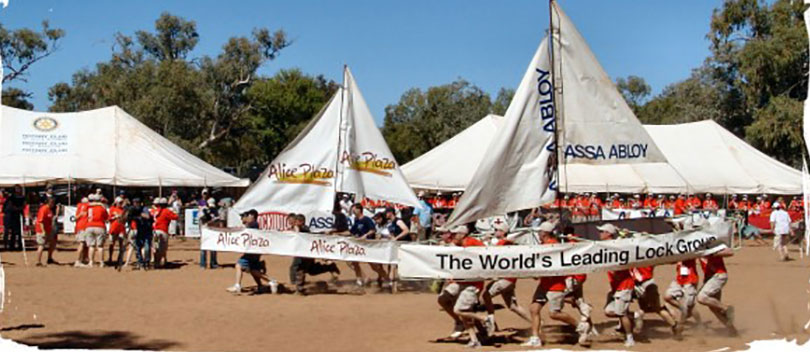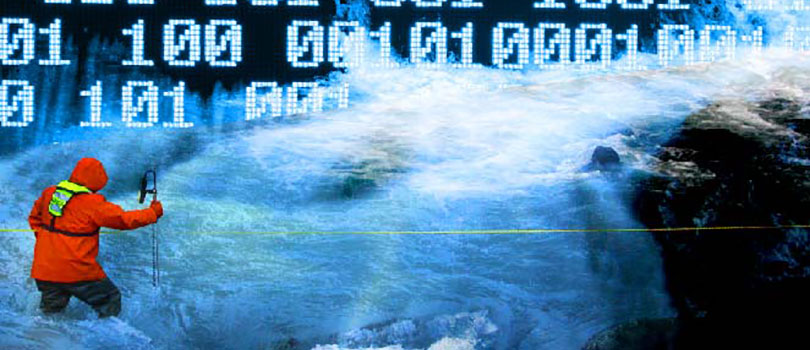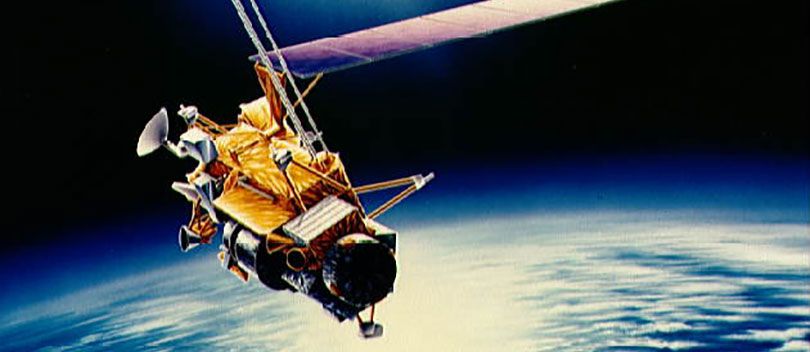
The Other Extreme : the Measurement of Water Flow
Most conversations about extreme measurements focus on flood flow.
However, I recently had a conversation with Emily Huxter about her thesis research focused on understanding stream ephemerality through the characterization of timing, duration, and spatial distribution of zero flow. Sounds easy so far, after all I used to call these measurements ‘windshield measurements’ because I could do a zero flow measurement without getting out of the truck, sometimes without even stopping.
It turns out that zero is both a difficult and important number.
Consider a v-notch weir with the water level exactly at the very bottom of the notch. A measurement at this point will be a true zero flow as proven by closing a water balance.
The generalized form of a water balance equation is Qo=Qi +ΔS/dt where Qo is the outflow, Qi is the inflow (e.g. from precipitation) and ΔS/dt is any change in catchment storage. In this case if there is an increase in inflow of exactly 1.000 l/s, with no change in catchment storage, then we would expect to be able to measure exactly 1.000 l/s of flow at the gauge hence: 1.000 l/s + 0.000 l/s = 1.000 l/s.
Now consider closing the water balance for zero inflow (i.e. no precipitation) and a decrease in catchment storage of 1.000 l/s (e.g. because the sum of water demands exceed water supply). The flow at the gauge cannot go negative resulting in an illogical water balance where subtracting one from zero is still zero: 0.000 l/s – 1.000 l/s = 0.000 l/s.
A standard rating equation is in the form: Q=B(H-e)a where ‘Q’ is discharge, ‘H’ is stage, ‘B’ and ‘a’ are calibrated parameters and ‘e’ is the elevation of zero flow. If the water level drops below the point of zero flow, which is the vertex for this parabolic equation, then discharge will, illogically, start increasing with decreasing stage. Furthermore, the Hydraulic Radius needed to solve for Manning's Equation becomes undefined (i.e. division by zero) when the wetted perimeter of the channel control becomes zero.
Hydrologic and hydraulic arguments tell us that any hydrological state less than exactly zero flow is undefined. It is not negative flow, it is not zero flow, it is undefinable flow. By what laws of science or mathematics can we understand and interpret our measurements when the water level drops below the point of zero flow?
Zero flow is a singularity for which there is a hydrological event horizon. Passing through this event horizon takes you from the world according to Manning’s Equation and into a parallel universe governed by Darcy’s Law.
What information does a string of zeroes in a discharge time series contain?
We can only be reasonably certain that the first and last value are close approximations of exactly zero flow. All of the other zero values in the string represent a gateway beyond which the information belongs in a different dimension. An understanding of hyporheic flow; evaporative losses; biotic demand, extractive, storage and diversionary uses; and of groundwater processes are required to cross that dimensional boundary.
For practical hydraulic purposes, downstream of the gauge, all of the zero values contain exactly the same information, namely that there is no water available at that point in the channel. However, for hydrologists interested in understanding and managing water supply and demand upstream of the gauge then zero flow data can conceal, rather than reveal, the whole truth.
Consider how you would express the uncertainty of the measurement of zero flow at this gauge. Evaluation of uncertainty in this case is a question of protocol: were standard procedures followed to ensure there is no leakage or bypass flow? If ‘yes’ then the uncertainty of the measurement is very nearly zero, if ‘no’ then there is a possibility of an uncertain, uncorrectable, negative bias to the measurement.
Bias is a problem in the expression of uncertainty, which is normally assumed to be identically distributed within a dataset. However, almost all small stream flows have biased uncertainty because any observable positive flow is unlikely to be reverse (i.e. upstream) flow so the closer you get to zero the longer the right tail becomes while the left tail of possible error gets shorter.
Uncertainty conditional on who is asking and how the data are to be used is not a good starting point for those interested in developing simple techniques for objective quantification of hydrometric uncertainty. The conventional approach is to aggregate and propagate component uncertainties up to the result of a measurement.
This is also problematic for zero (and small) flow measurements. A typical response speed for a Price AA current meter is about 0.006 m/s, any less and there is not enough stream power to move the bucket wheel. What then is the uncertainty of a measured velocity of 0.000 m/s? You could nominally say the uncertainty is +/- 100% but 100% of zero is still zero so how can a zero velocity have zero uncertainty when anything less than 0.006 m/s is unmeasurable with this technology?
Clearly, there must be some threshold.
There must be some threshold below which it only makes sense to quantify uncertainty in absolute terms (e.g. m3/s) not relative terms (e.g. %). Consider the uncertainty of an index velocity model for a tidal gauge with reversing flow. Does it really make sense that the zero flow value would have zero error? Unfortunately any design for conditional representation of uncertainty in either absolute or relative terms is problematic because the set of rules must somehow accommodate the sensitivity and precision of all possible measurement technologies.
Another important source of uncertainty in the measurement of zero flow is duration. Suppose you have perfect placement of your monitoring point (e.g. well intake, bubbler orifice, or pressure transducer) on the channel thalweg. The water level will drop and perhaps either level off or go dry. What is the exact time when flow transitions from non-zero to zero? During a gauge visit you can confirm that the gauge is either dry or in a pool with zero velocity, but that field observation does not tell you the time when the velocity went from non-zero to zero.
How about when the flow becomes active again? Is the water level at cease-to-flow exactly the same as the level when flow recommences? This seems unlikely because at these very small flows any rearrangement of pebbles, leaves or debris on the control will make a big difference in conveyance capacity. The only way to be sure exactly when the flow transitions between non-zero and zero is to be there to make velocity measurements.
A more likely operational outcome is subjective interpretation of the time-series to guess when there is enough evidence in the signal to indicate either zero or non-zero flow. This subjective decision making would be greatly aided by increased monitoring effort using ‘soft’ data such as strategically placed temperature and conductivity probes and gauge cameras. What is the uncertainty of this guess and how should this uncertainty propagate to neighboring values within the time range of the uncertainty of this guess?
Zero is a difficult number to understand, to measure, and to monitor.
Zero is the gateway to another dimension of hydrology. If we are to capture all relevant hydrological information at our gauges then we must find a way of crossing into the parallel universe of the hyporheic zone. In order to master the art of the measurement of everything we have to first learn to master the measurement of absolutely nothing.
I will leave a discussion about the importance of measurement of zero flow for my next blog post.
Todd River Boat Race – Photo by Frank Weber


